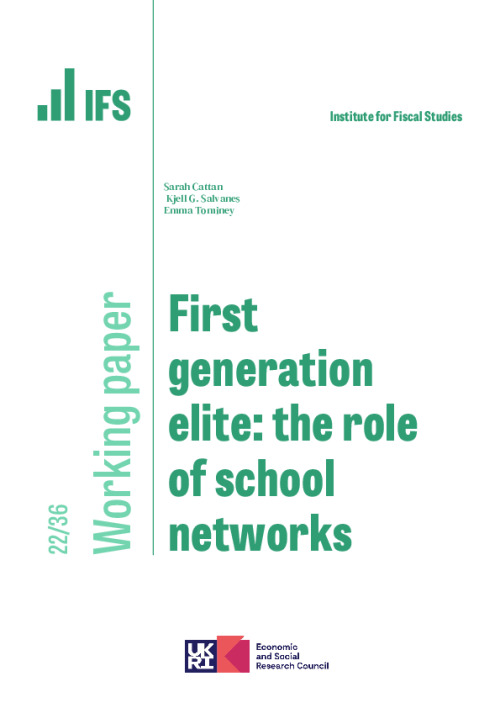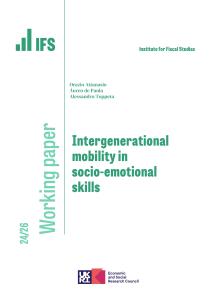Intergenerational persistence in studying for elite education is high across the world. We study the role that exposure to high school peers from elite educated families (‘elite peers’) plays in driving such a phenomenon in Norway. Using register data on ten cohorts of high school students and exploiting within school, between cohort variation, we identify the causal impact of elite peers on the probability of enrolling in elite education for students from different socioeconomic (SES) backgrounds. We show that exposure to elite peers in high school does drive enrolment into elite degree programmes, but the effect for low SES students is a third of the size than for high SES students. We explore mechanisms behind this pattern – finding that elite peers have a complex effect on students’ GPA which is a key part of the story. Elite peers increase the effort of both low and high SES students, but they also push the rank of other students down and trigger a change in teacher behaviour which disadvantages low SES students. To quantify the contribution of this mechanism, we perform a causal mediation analysis exploiting a lottery in the assessment system in Norway to instrument GPA. We find that the indirect effect of elite peers on enrolment through GPA explains just less than half of the total peer effect. Our concluding analysis shows that elite peers in high school raises intergenerational mobility for poor students, but increases persistence for rich students, thereby simultaneously facilitating first generation elite whilst contributing to the high intergenerational persistence at the top of the education and income distribution.










